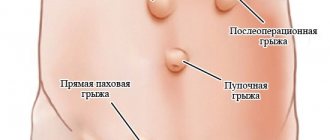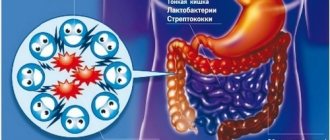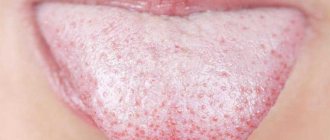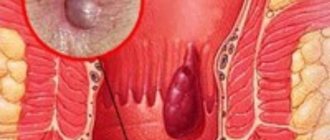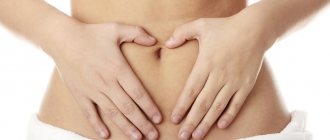Causes of foamy stools
Foamy stools can be common, especially in young children. It can have different reasons: some are the result of diseases, others are normal.
When breastfeeding
When breastfeeding, the baby's stool is more frequent and loose, unlike the stool of bottle-fed children. Mild foaming may occur frequently as a nursing mother introduces new foods to her diet. And this is the absolute norm and does not threaten the baby’s health. The stool begins to recover on its own after 3–6 months of life and returns to normal after the introduction of complementary foods.
If the child feels well against the background of foamy stool - he is not capricious, sleeps and eats well, and is gaining weight and height - then there is no reason to worry. In infancy, the indicator of health is not the stool, but the general condition of the baby.
If the child is not gaining weight well, the foamy stool is dark in color, the child is constantly capricious, restless, or sleeps poorly, then this may be a sign of insufficient breast milk. In such a situation, it is worth restoring lactation with the help of the right diet, supplements for nursing, and in extreme situations, supplementary feeding should be introduced.
Lactase deficiency
Lactase deficiency is one of the diseases that can cause loose stools.
Lactase deficiency refers to reduced activity of the intestinal enzyme lactase, which breaks down the milk sugar lactose. It manifests itself as bloating, rumbling, pain, loose, watery stools with foam, free fluid may be present on the diaper around the stool, and the child is often bothered by colic. The smell of feces has a characteristic sour odor. To make a reliable diagnosis, you need to take a stool test for carbohydrates and try a lactose-free diet.
If you have any of the above symptoms, you should first contact your pediatrician. In the case of artificial feeding of the child, it is enough to switch to a milk formula with a low lactose content or to a lactose-free formula - “Bebilak-FL”, “Mamex lactose-free”, low-lactose “Humana” and “Nutrilon”, “Humana LP”. When breastfeeding, it is suggested to feed the baby with “hind” milk, which is low in lactose. Foremilk is allowed to be given only after the addition of the lactase enzyme: for children under one year old, the drug “Lactase Baby” is allowed. Porridges should also be prepared using low-lactose mixtures.
Lactase deficiency is not a reason to transfer a child to artificial feeding.
The drugs Lactobacterin and Bifidumbacterin cannot be given to such children, because they contain lactose.
If you follow the rules of the therapeutic nutrition regimen, enzyme activity is restored within 1–3 months.
Foamy stools can appear in a healthy baby who does not suffer from lactase deficiency if breast milk is not distributed correctly - if the mother feeds him only low-fat foremilk. This is most often observed when a woman, not allowing the baby to suck all the milk from one breast, offers the other.
Food allergies
- For a food product introduced by the mother into her diet (milk, sugar, bright berries, citrus fruits, nuts, etc.).
- For new milk formula.
- On the administered drug. Stool may change during treatment with antibiotics; some mothers note such a reaction to the use of Plantex (a remedy for colic and dysbacteriosis).
- Such a reaction may occur after the early introduction of complementary foods.
When the cause is eliminated, the stool returns to normal on its own.
Dysbacteriosis
The manifestation of dysbacteriosis consists of a variety of nonspecific signs. The stool may be liquefied, with mucus, undigested lumps of food, diarrhea alternates with constipation. Regurgitation and flatulence are often observed.
In both treatment and prevention, the main thing is breastfeeding. For bottle-fed children, you can replace the formula with fermented milk or acidophilus. At an older age, you need to follow a diet that includes eating cereals, vegetables, and dairy products. At any stage of dysbiosis, the use of probiotics is justified - Lactobacterin, Bifidumbacterin, Linex, Acipol, which are allowed from the first days of life.
Treatment of dysbiosis can take 1–2 months.
Staphylococcal intestinal infection
With a staphylococcal infection, foamy stool is not the main symptom, and it does not always appear. But if a child has problems with stool (liquid, foamy, with a lot of mucus), severe pain in the tummy, and there are no other reasons to explain this condition, then it is worth taking a stool test for staphylococcus and, if the result is positive, undergo treatment . Untreated staph can lead to serious complications.
Rotavirus infection
The nature of the stool is liquid, frequent, yellow, foamy, with a pungent odor. The disease occurs against a background of high fever, red throat, runny nose; in the first days, vomiting, cramping or aching pain in the abdomen may occur. The disease occurs in the form of massive outbreaks in children's groups, mainly from October to March.
Treatment is carried out under the supervision of a doctor with the prescription of the synbiotic Primadophilus, Linex, Lactobacterin, an important point is desoldering therapy.
Intestinal infections
Foamy stools are not a typical symptom of an intestinal infection. But it is possible that it may occur along with the main manifestations of an intestinal infection against the background of strong and frequent loose stools.
The main signs of an intestinal infection:
- Persistent increase in temperature to high numbers.
- Vomit.
- The stool is loose and appears with a frequency of 10–12 times a day.
- There is blood, mucus, or greens in the stool.
- The smell of stool is pungent and unpleasant.
If you have an intestinal infection, you should immediately consult a doctor. An untreated intestinal infection can lead to dehydration, which is a direct threat to the child's life.
Fermentative dyspepsia
In older children, foamy stools appear as a result of fermentative dyspepsia. Fermentation dyspepsia develops after excessive consumption of carbohydrate foods: cabbage, kvass, legumes, apples, pears, raisins, soda, etc., manifested by bloating and rumbling in the abdomen, and frequent, light, foamy stools.
Mild manifestations of fermentative dyspepsia will go away on their own within 24 hours. In more severe cases, the child should exclude carbohydrates for 4 days, eat cottage cheese, meat, and fish. Then gradually introduce carbohydrates. She passes without a trace.
To dispel their doubts, if they suspect any of the above reasons, parents can consult a doctor and take stool tests. Remember that your doubt is the best controller in any situation.
About intestinal infections, a symptom of which may be foamy stools, in the program “Dr. Komarovsky’s School”:
Almost all parents, especially when they have their first baby, are sensitive to any changes in his well-being, especially foamy stools in the baby. Lack of experience makes women worry about watery feces in the baby. However, such changes are not always evidence of diarrhea and danger. Therefore, it is important to have detailed information about why the baby has foamy stools, what needs to be done in such cases, and whether it is always necessary to contact a pediatrician.
Infectious diseases
Foamy green stool in an infant is one of the symptoms of a serious illness. If the stool turns green, you should immediately consult a doctor to rule out staphylococcus infection and intestinal infection.
Intestinal infections, in addition to foamy stools with each bowel movement, are characterized by a set of other symptoms, including:
- increased temperature;
- abdominal pain;
- vomiting;
- loss of appetite;
- diarrhea.
A child with an intestinal infection requires treatment - you need to call a doctor and prepare a stool sample for analysis. Foamy stool may be green and contain blood and mucus.
Infection with staphylococcus can manifest itself in the form of foamy stool, but other symptoms are also observed - suppuration of wounds, boils, inflammation of the mucous membranes, etc. Drug treatment is prescribed by a doctor.
About Normal Baby Poop
Experienced mothers know that babies' poop is normally yellow. They have a specific smell and cannot be too thick. At the same time, the feces of a breastfed and bottle-fed baby are significantly different: in the first case, they have a more sour “aroma” and leave characteristic stains on the diapers.
As for artificially fed children, there may be more options for the shade of feces: light yellow, dark orange, brownish, bright yellow. It depends on the type of mixture. It also determines the smell of the newborn’s feces, their consistency, and the number of bowel movements per day. Infant formulas have a similar composition, but not identical. For example, an increased dose of iron in such a diet can turn the feces into a greenish tint. Typically, such mixtures are recommended for children under one year of age with diagnosed anemia.
It is worth noting that it is precisely those who are artificially fed who are more likely to have problems with constipation than with loose stools. Pediatricians call the norm that such babies have a bowel movement once a day.
Practice shows that adapted mixtures often have a fixing effect. While breast milk, depending on the woman’s nutritional type, can create the above problem. Foamy stools appear more often in breastfed babies. It might even be green. As for the daily number of bowel movements of such newborns, the norm may be 4-6 times and after each feeding.
Primary diagnosis
By the color of foamy stool, you can determine some types of disorders of the baby’s gastrointestinal tract:
- Light shade. If light, foamy stools with a putrid odor appear regularly, the baby experiences bloating and skin rashes, this usually indicates dysbacteriosis.
- Greenish tint. Such feces are typical for dysbacteriosis, but can be a manifestation of an intestinal infection or infection with staphylococcus. Dark green stools, fever, vomiting and other symptoms are a reason to immediately consult a doctor.
- Yellow color (normal). Foamy yellow stools indicate a lack of breast milk and the nutritional imbalance needs to be corrected.
- White color. White, foamy stool indicates poor bile flow. To identify the causes of the disease, it is necessary to perform a coprogram, a biochemical blood test, and an ultrasound of the abdominal organs.
Foamy stool in children in the first months of life is normal if the baby remains in good health. By monitoring the characteristics of bowel movements, you can correctly adjust the child’s nutrition. It is important to carefully monitor the child’s general condition, and if fever and other symptoms of the disease appear, call a doctor immediately.
Reasons for stool changes
There are many of them. Children's doctors identify the most common factors that provoke alarming changes. Here are the main reasons for foamy stool in infants:
- Allergy. It even occurs with breast milk. Let us remind you: the products consumed by the mother (all without exception) end up in it. However, not all such components of milk are normally perceived by the baby’s digestive system. When a child is prone to allergies, his gastrointestinal system reacts to similar products on the mother’s menu with a kind of protest - the baby poops foam. A similar reaction of the ventricle can be observed with the illiterate introduction of adult food (complementary foods). We are talking about introducing the baby to them too early or not following the principle of gradualness when introducing them.
- Medicines. Even medications allowed for such young patients can provoke a sharp deterioration in digestion. A manifestation of this is that the child has foam instead of feces. Also, the use of medications by the mother of the baby provokes a similar condition. Inexperienced lactating women, when they experience pain (dental, stomach), out of habit, grab medications from the home medicine cabinet, not taking into account that they quickly penetrate into their milk. Experience shows that even specially designed anti-colic medications for infants can cause foamy diarrhea in a child.
- Infections. Intestinal diseases quite often provoke the above problems if parents themselves ignore the rules of hygiene and do not pay due attention to sterility in keeping the baby. In such situations, not only does the child develop foam in the stool, but the body temperature rises sharply, colic occurs, and the child cries restlessly. Pediatric practice states that rotavirus in infants can also be the cause of watery, foamy stools. In the latter case, the feces become green. Infections can also cause digestive disorders during periods of teething in children of this age. This is always a painful process when babies try to scratch their sore gums and pull various dirty toys and objects into their mouths. Thus, infectious agents provoke foamy stool in an infant. In addition, salivation may increase and the child may experience irritability.
- Dysbacteriosis. It is not a common factor that a baby develops loose stools with foam. The disease is almost always accompanied by disruptions in the functioning of the child’s weak digestive system. A characteristic feature in this case is undigested food in the feces, weight loss with a good appetite. Children's doctors claim that in some newborns, transit dysbiosis can be a temporary phenomenon and does not require drug interventions or other auxiliary measures.
- Lactase deficiency is nothing more than the presence of a deficiency of a particular enzyme. Lactase is a substance that helps babies process food. They receive the enzyme through mother's milk. When a woman doesn’t have enough of it, her child’s feces take on a different, more unpleasant smell. Bubbles and foam are observed in the child's stool.
- Incorrect feeding technique. An imbalance of breast milk occurs when the baby simply does not get the so-called hind milk, which is more nutritious. Getting a purely anterior one, the child may experience loose, foamy stools. This is more common in cases where the mother is inexperienced and incorrectly applies the baby to the mammary glands. This is what provokes foamy stool in the baby during the guard.
- Malnutrition. Breast milk deficiency catalyzes not only a lack of enzymes, but also weight loss and disruptions in the baby’s digestive tract. This is also reflected in the condition of the feces. It may become lighter, almost white.
- Excessive gas formation. This is often typical for babies up to three months of age, during the formation of their gastrointestinal tract. Sometimes the problem goes away without the intervention of a pediatrician, with age. But often gas formation and its consequence - foam in the stool of a baby - is the result of a woman’s illiterate nutrition. Eating cow's milk, stewed cabbage, sweets, grapes and other forbidden dishes on the menu has a negative impact on the child's digestion.
- Intolerance to certain foods. Some infants may develop celiac disease when introduced to cereal-based complementary foods. Then the feces become smelly and even shiny.
- Cystic fibrosis. This is the name for disruption of the functioning of the endocrine system of congenital etiology. The pathology manifests itself as disturbances in the gastrointestinal tract, weight loss, and diarrhea.
- Other ailments. Foamy stool in a baby can be just one of the signs of volvulus, peritonitis or appendicitis. Diseases such as the causes of bowel problems are not often recorded in young patients. Only experienced pediatric doctors can diagnose them in such a case.
Malnutrition and nutritional imbalances
- Malnutrition. If a baby systematically does not receive the required amount of breast milk or artificial formula, a deficiency of nutrients forms in his body. This affects the functioning of the intestines - the stool is darker in color and contains foam.
- Imbalance of milk during natural feeding. Mother's milk can be divided into fore and hind milk. Foremilk primarily performs a drinking function; it is less fatty, contains the maximum amount of vitamins and minerals, as well as lactose, a carbohydrate necessary for the growth and development of the child.
Lactose is digested by the enzyme lactase. The baby's body produces this enzyme, but in small quantities. The lack of its own lactase is compensated by the enzyme supplied to the baby along with the mother's hind milk.
Why does nutritional imbalance occur? If a newborn manages to get enough of the foremilk without reaching the hind milk, lactase deficiency occurs. With a sufficient volume of milk received, the baby does not receive enough enzymes and lactose is not digested in the required amount.
Lactase deficiency manifests itself in the form of liquid, foamy stools with a sour odor. If you suspect this disorder, you should take a stool test for carbohydrate content. Correcting the diet will help correct the disorder; in some cases, additional injection of lactase into expressed foremilk may be prescribed.
By tracking stool consistency, you can determine what kind of milk your baby is getting. Watery, foamy stools indicate a predominance of foremilk in the diet. In order for the baby to receive the required amount of fatty milk with lactase, it should be applied to one breast until it is completely empty.
How to treat foamy stools in babies
When noticing that a child’s stool is foaming, what actions should his mother take? Don't panic is the main thing. After all, her nervousness is passed on to her child. You need to act consistently and competently. The best adviser in such cases will be breastfeeding specialists and children's doctors.
First of all, they will recommend getting tested. There is no need to guess what factor became the catalyst for the problem in a boy or girl. It is necessary to bring a diaper with fresh baby feces to the clinical laboratory. The test results will reveal the infection if the baby has it. Then the pediatrician will prescribe the correct, safe therapy and monitor the process. If an infection is detected, the doctor will prescribe drugs to the young patient to destroy it. These could be:
However, there may be other reasons for foam in a baby's stool. And bacterial culture will help to establish them. Such a study determines the composition of the intestinal microflora, identifies pathogenic bacteria, as well as the ratio of harmful and beneficial microorganisms. If there is a deficiency of the latter, pediatricians usually diagnose “dysbacteriosis” and prescribe special medications in the form of beneficial bacteria to young patients. Such medications may be:
How to Avoid Foamy Poo
Most responsible mothers worry when their baby's stool foams. But what they perceive as a danger signal is not always so. An experienced doctor will help confirm doubts or completely dispel them.
To avoid changes in the functioning of the child’s digestive system, regardless of the type of feeding, parents must strictly observe personal hygiene everywhere and not neglect to boil children’s dishes and toys. The recommendation is especially important during the period when the baby is teething and he puts dirty things into his mouth.
Lactating women need to realize that restrictions in their own diet are the basis for the baby’s calm, rapid adaptation of the ventricle to stable operation, and the absence of colic. You need to understand the list of prohibited foods and, at least until the child is three months old, exclude them from the menu altogether. We are talking about those that increase gas formation and can provoke allergic reactions. Ideally, nursing mothers should keep a food diary to make it convenient to track changes in the baby’s condition and find out what could have caused them.
As for infants on adapted formulas, the main recommendation is not to overfeed them. An abundance of food is not caring for the baby, but on the contrary, it is harmful to him. Mucus, foaminess of stools, their frequency, and digestive disorders indicate that the gastrointestinal tract system cannot cope with the load.
To prevent the above pathology, doctors advise not to rush to introduce your child to adult food. It should be administered to breastfeeding babies no earlier than five months of age and only if there is no allergy. You also need to remember about the gradual transition to adult food: start with a teaspoon and increase the volume of complementary foods daily by the same portion. The first can be vegetables or cereals.
As you can see, the advice is not difficult. Compliance with them allows you to raise healthy, calm, strong children.
There are currently no specific parameters for stool in infants under one year of age. Consistency, odor, color and frequency may vary. The presence of foamy stool in an infant is normal if the child feels well, gains a fair amount of weight and his development meets age requirements. It is the behavior and well-being of the baby that will be indicative, and not the characteristics of the feces. Foam inclusions can also appear at an older age - children of two and seven years are not immune from this. This feature of bowel movements also occurs in adults - all this is an indicator that fermentation is occurring in the intestines, which causes foaming. This process can occur for various reasons.
What symptoms accompany foamy diarrhea?
Doctors characterize loose stools as dyspepsia. This means a violation of the digestive function of the stomach. The main manifestations of foamy diarrhea are:
- rumbling;
- stool contains inclusions of bubbles, grains or undigested foods;
- pain during bowel movements (in some cases this symptom is absent);
- loose stools are observed frequently;
- stool has a sour smell.
However, some signs differ between children and adults. This is due to diseases that manifest themselves in a particular age group.
Signs of foamy diarrhea in an adult
In some cases, in an adult, indigestion is considered the only symptom. However, it often happens that loose stools are accompanied by attacks of nausea and vomiting. In addition to foam formation, inclusions of mucus and blood are observed in the stool. A manifestation of disease and intoxication of the body is considered to be an increase in temperature to 38°C. In this case, pain occurs in the abdominal area. In some cases, rashes appear on the body.
If foamy stool and several additional symptoms continue for more than 2-3 days, then you should seek help from a doctor. The patient needs first aid and medical examination.
With diarrhea, dehydration occurs, which, with prolonged symptoms, leads to an imbalance in the water balance in the body. This leads to malfunctions of the cardiovascular system. Additionally, symptoms begin with a decrease in blood pressure. Otherwise, the patient’s well-being may deteriorate sharply.
Causes of foamy stools in infants
Foaming in the stool itself is not a cause for concern about the health of the little one. This characteristic appears due to functional disorders in the intestines. This is not a disease and the phenomenon will go away on its own as the baby grows up. Let's list the main reasons:
- Feeding disorder. When breastfeeding, there are situations when the baby sucks only foremilk. The most nourishing and fatty hindmilk remains intact.
- Gas formation. Excessive amounts of gas influence the appearance of stool with foamy impurities. By the age of 3-4 months, the gas problem disappears, and along with it the foam disappears.
- Allergy to mother's milk. Poor nutrition of the mother, consumption of prohibited foods, including active consumption of seasonal fruits are one of the causes of the problem we are considering. Allergic reactions in a baby occur not only because of what the mother eats, but also in what quantities.
- Allergic reaction to the mixture. A baby on an artificial type of feeding may negatively perceive the introduced mixture, then it is necessary to consult a doctor. Selecting a new mixture can also cause the appearance of foamy stools; such a reaction when changing products is a common occurrence.
- Allergic manifestations to medications. Medicines taken by the mother can negatively affect the baby’s well-being. Before you start taking any medication during lactation, be sure to consult your doctor. A baby who takes medications can also get digestive disorders.
- Premature start of complementary feeding and its mistakes. By starting complementary feeding before six months, you risk giving your baby negative reactions from the gastrointestinal tract. It could be diarrhea, or it could be foamy, loose stools. The warning especially concerns the beginning of complementary feeding with fresh juices, fruits and vegetables.
Light chair with foam
It is normal for a child to have a brown tint to their stool. The pigment stercobilin colors it this way, but the color of the stool will not only depend on it. Food plays a big role. A nursing mother's diet, consisting mainly of plant foods or large amounts of milk, can lead to the appearance of light, foamy stools in the toddler.
Light-colored bowel movements in a child may be a signal that putrefactive processes are occurring in the intestines or that there is a lack of bile. Be careful! If you notice light-colored feces with foamy impurities in your child, you should consult your doctor about this issue. Sometimes, although these cases are very rare, the light color of stool is a consequence of an infection in the intestines, and this, in turn, can bring a lot of trouble to the child’s body.
First aid
During this period, it is extremely important for a child’s body to replenish lost fluid, so save the baby from dehydration with water. To do this, you can use special solutions with electrolytes, which are aimed at restoring the water-salt balance. For children fed on mother's milk, continued lactation is extremely important.
Remedies to help cope with the problem:
- Regidron or Gastrolit. These medications will help with dehydration. You can buy them at any pharmacy, and they are diluted very simply - with water (in the proportions specified in the instructions). The cooled liquid should be drunk in small sips.
- Smectite. A drug used for diarrhea, which copes with the task of removing harmful toxins, microbes and other negative substances from the baby’s body. Smectite restores intestinal microflora and is pleasant to the taste. Infants are given the product in the following concentration: dissolve ½ sachet in 1 glass of water. The baby should drink this volume several times.
- Enterol. This remedy is an indispensable assistant for dysbiosis and various infectious intestinal diseases. Just 4 days of use, and you will notice that your baby’s stool does not foam, and his intestines will be free of fungal and microbial microorganisms. Release form for children - capsules. Dissolve the contents of the capsule in milk and give the little one something to drink. You should not take the drug for more than 5 days.
- Hilak Forte (we recommend reading: instructions for “Hilak Forte” for newborns). The presence of foamy stool in most cases implies taking this drug. It restores microflora and is responsible for improving the functioning of the digestive system. The drops are easy to use. The child only needs to give a couple of drops after feeding.
Hilak Forte will quickly improve the functioning of the digestive system and relieve indigestion
- Linux. When the intestines are weakened by a large content of bacteria, Linex will come to the rescue (we recommend reading: instructions for using Linex baby powder). The capsule should be opened and the powder poured into water or milk.
- Lactase Baby (we recommend reading: instructions for the drug “Lactase Baby”). An enzyme-based drug helps to better absorb dairy products. For babies up to one year old, this product is added to expressed milk. After a few minutes, you can begin treatment. Children after 1 year of age can dissolve the contents of the capsule in water with a small amount of milk.

